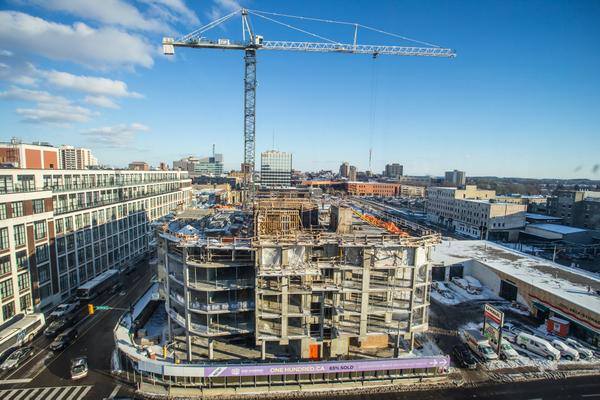Matt Quick
CONTRIBUTOR
In Waterloo Region, the number of millenials, individuals aged 15 to 35, reached 141,855 in 2011, up 4 per cent from 2006 according to Statistics Canada. With no shortage of tech sector jobs in the region, this trend is not slowing as young workers are attracted to the area. Housing is another story.
On Jan. 29, Professor Markus Moos of the University of Waterloo School of Planning hosted a panel discussion titled Housing the Future. The discussion featured researchers from across Ontario and focused on housing affordability for the millennial generation.
Housing the Future highlighted some of the hurdles that millennials face trying to find affordable housing they desire: increasing costs of living, precarious entry-level employment and large debts that have become commonplace following post-secondary education.
Millennials have been entering the housing market over the last 10 years and their housing needs and preferences are having a clear effect in metropolitan cities. In Toronto, for example, glass-walled condominiums tower over the waterfront. Though the influence of Millennials on the housing market is less obvious in Waterloo Region than in larger urban centres, their presence has become hard to ignore.
The number of condominium and townhome projects in Kitchener, Waterloo, and Cambridge are increasing, multi-unit dwellings have dominated housing projects since 2010, and apartment buildings, though somewhat driven by purpose-built student developments, have represented the largest number of new developments.
Purchasing a suitable house is becoming increasingly challenging for the millennial demographic. The average purchase price for housing in Waterloo Region was $337,000, and though lower than many other large and mid-sized cities in Ontario, the figure has been gradually rising since 2005. A 20 per cent down payment towards a mortgage of that size – the minimum required to avoid costly Canadian Mortgage and Housing Commission mortgage insurance – is $67,400, not an insignificant cost for young adults without reliable employment and weighed down by student debt.
Like other groups for whom purchasing a home is inconceivable, millennials are choosing to rent. The construction of new multi-unit buildings in the region has increased the supply of rental units in urban neighbourhoods that are attractive to many. But the increase in supply has not resulted in affordable prices; costs continue to rise due to demand. The CMHC reports that in Waterloo Region average rents for bachelor units have increased by 25 per cent since 2003, and by 20 per cent for one and two bedroom units.
Looking to the future, a variety of local dynamics are important to housing affordability in general, and for millennials in particular. Urban redevelopment spurred by future transit investment create further housing issues, or improve them? Could Millennials benefit from the collapse of a housing bubble? How will changes to interest rates affect the ability for young adults to obtain credit for housing? The housing picture in Waterloo Region isn’t clear, but all signs point to a challenging hunt for a house that fits the bill: in size, location, and price.




Leave a Reply